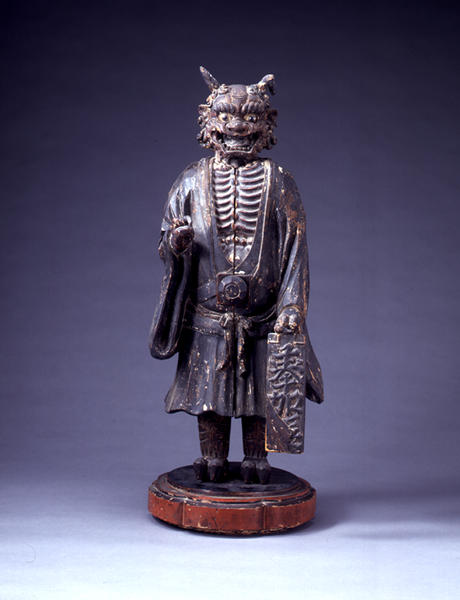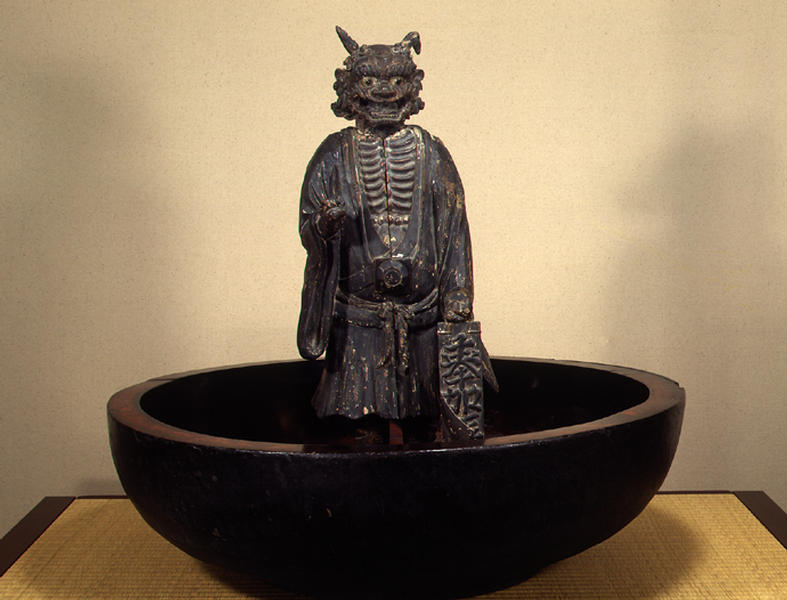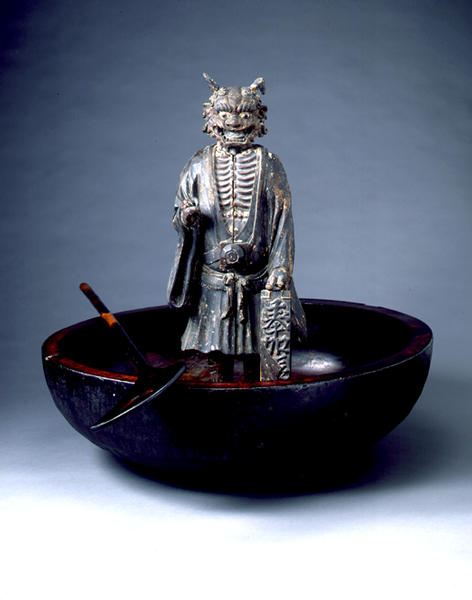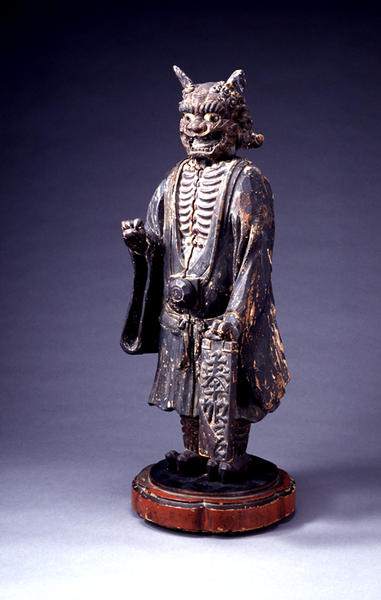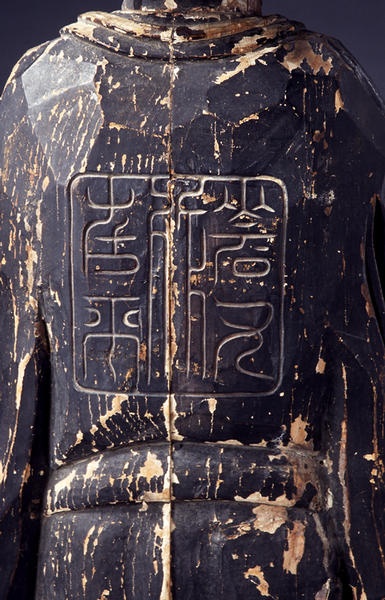Standing Goblin
- Edo period
- 18-19c
- Black lacquered wood
- H-87 W-37
Catalogue Entry
This is a sculpted image of the “Oni no Nembutsu" figure commonly found in Otsu‐e folk prints. Otsu‐e are folk prints and paintings that were sold by local residents as souvenirs around the Miidera area near Otsu in Shiga prefecture. At first these pictures commonly depicted Buddhist images, but gradually they shifted to more humorous topics such as Fujimusume or the Wisteria Maiden and catfish (said to be the cause of earthquakes). The story behind the Oni no Nembutsu, or literally the demon reciting sutras, can be summed up like this. “A greedy monk lived in a temple in Otsu. In order to chasten this monk who sought to line his own pockets when out soliciting donations to his temple, a man told him he should wear a Jizo mask, the god of compassion, while on his soliciting rounds and then he would collect a great amount of money. The man then put a demon mask on the monk and sent him out on his rounds. But little did the monk know that he was wearing a demon mask, and when he tried to beg for donations, the people were frightened and threw rocks and bricks at him. These attacks broke the left horn on the demon mask. The monk ran back huffing and puffing to the temple, and would never show his face again."
This image shows the form of the monk described in this story. There is a slight bit of pathos tingeing the humor here, and in this mixed symbolic meaning we can sense its resemblance to the often enigmatic Otsu‐e images. The figure holds a plectrum in his right hand, used to strike his begging bell
